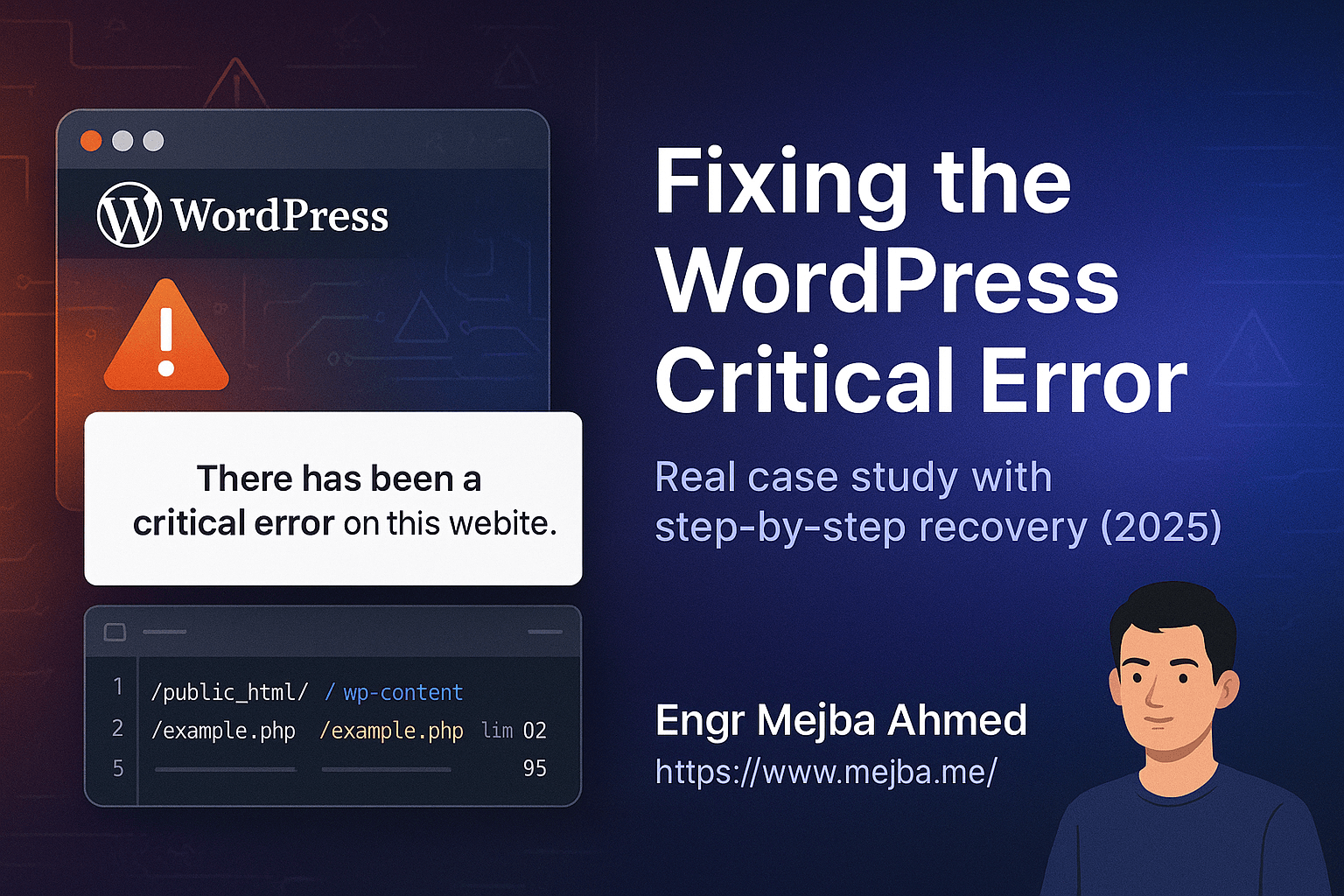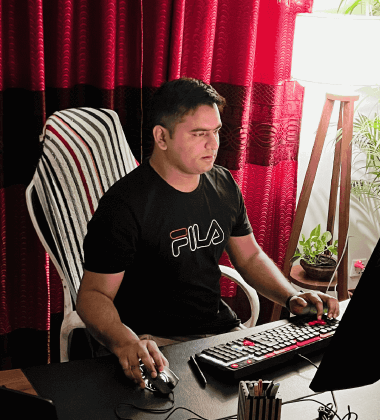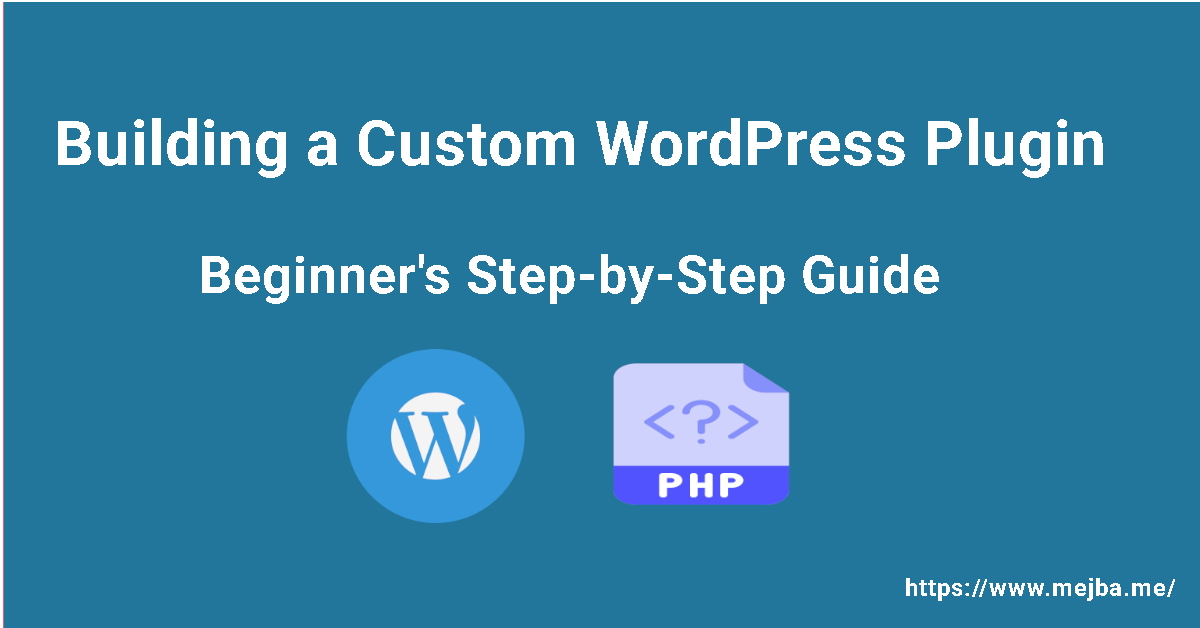✨ Introduction
Boom. Just like that — our entire website went down. All we saw was that dreaded white screen with the cryptic message:
"There has been a critical error on your website."
No pages, no admin dashboard, no warning. One moment everything was working; the next, we were locked out of our digital storefront.
If you’ve ever faced this, you know the panic. Lost traffic. Lost sales. And that gut-wrenching fear that your website might be gone for good.
The good news? We fixed it. Fast. And in this blog, we're pulling back the curtain on exactly how we did it — step-by-step.
You’ll learn:
- What causes the “critical error” in WordPress
- How to identify the root problem (without guesswork)
- Which fixes actually worked for us — and which didn’t
- How to avoid this nightmare in the future
Let’s dive in and help you get your site back online.
🧨 What Is a “Critical Error” in WordPress?
The “There has been a critical error on your website” message is WordPress’s way of telling you something catastrophic just broke your site.
It typically appears due to:
- Plugin or theme conflicts
- PHP version mismatch
- Corrupted core files
- Missing or broken dependencies
- Memory limits or fatal script errors
WordPress introduced this “white screen” in version 5.2+ as part of its fatal error protection, but unfortunately, it tells you nothing about what’s actually broken.
🕵️♂️ Step 1: Immediate Actions We Took After Seeing the Error
🔍 Check Your Email
WordPress often sends a recovery mode email with more details.
But we didn’t receive one. That meant we had to manually diagnose the issue.
🛑 Disable Error-Causing Plugins via FTP
Since we couldn’t access the WordPress dashboard:
- We connected to the server using FileZilla (FTP)
- Navigated to:
/public_html/wp-content/plugins - Renamed the suspect plugin folder (in our case,
elementor) toelementor-disabled
Pro Tip: Renaming a plugin folder deactivates it instantly.
🔎 What We Found
Right after disabling Elementor, the site partially loaded — confirming the plugin was the issue. But styles were broken and some pages didn’t work.
That led us to believe there was a deeper conflict or version issue.
⚙️ Step 2: Enable WordPress Debug Mode to Get Clues
To see real error messages, we enabled debug mode:
// In wp-config.php
define( 'WP_DEBUG', true );
define( 'WP_DEBUG_LOG', true );
define( 'WP_DEBUG_DISPLAY', false );
After refreshing the site, we checked the log at:
/wp-content/debug.log
Boom — there it was:
Fatal error: Uncaught Error: Call to undefined function ...
The plugin was calling a function missing from the current PHP version.
🧩 Step 3: Check PHP Version and Server Logs
🖥️ SSH into the Server:
php -v
We found the server was running PHP 7.2, while the plugin required PHP 8.0+.
That’s a major compatibility issue.
✅ Solution: Upgrade PHP
We upgraded the PHP version to 8.1 using our hosting control panel and restarted the web server.
Then, we:
- Cleared the server cache
- Renamed the plugin folder back to
elementor - Refreshed the site
🎉 The critical error was gone.
🧹 Step 4: Clean Up Broken Plugin Data
Even though the plugin reloaded, some widgets and pages weren’t displaying correctly. That’s because:
- The update reset a few global settings
- Some widgets were deprecated in the latest version
We:
- Manually reconfigured affected pages
- Restored certain sections from a recent UpdraftPlus backup
- Cleared all cache (WP Rocket + browser + CDN)
🔐 Step 5: Security + Hardening Audit
Crashes like this are wake-up calls. After the site was back up, we:
🔄 Implemented Automatic Backups
- Daily database + file backup
- Stored on Dropbox + server
- Retained 30-day history
🔒 Hardened WordPress
- Changed file permissions:
644for files,755for folders - Disabled PHP execution in
/uploads/ - Limited login attempts using Limit Login Attempts Reloaded
- Installed Wordfence for live traffic monitoring
🛠️ Lessons We Learned (So You Don’t Repeat Our Mistakes)
❌ Don’t update major plugins blindly
We updated Elementor without testing on staging. Bad move.
⚠️ Avoid outdated PHP versions
Plugins evolve — your server should too. Always stay on supported versions.
✅ Use a staging environment
It’s non-negotiable. We’ve now set up:
- A staging subdomain (
staging.domain.com) - A 1-click deploy system with WPVivid Pro
💾 Back up before every update
Even small updates can wreck your site. Automate full backups before plugin/theme/core changes.
⚡ Quick Takeaways: What to Do If You Hit a Critical WordPress Error
- ✅ Rename suspect plugin folders via FTP to disable them
- 🔍 Enable WP debug mode to see actual error logs
- 📈 Check PHP compatibility with all major plugins
- 🧠 Don’t rely on email recovery mode — check logs directly
- 🔄 Always test updates on a staging site first
- 🔒 Lock down WordPress with security best practices
📣 Call to Action
Critical errors can cost you more than just traffic — they erode trust and destroy momentum.
If you’re not confident navigating FTP, debugging PHP errors, or setting up recovery workflows, don’t go it alone.
At Ramlit Limited, we offer:
- Emergency WordPress rescue services
- Full security audits
- Backup + recovery automation
- Ongoing performance and update management
👉 Get Expert Help Now and protect your website from the unexpected.
❓ FAQ: WordPress Critical Error Fixes
Q1: What triggers a critical error in WordPress?
Usually plugin conflicts, outdated PHP versions, corrupted themes, or missing dependencies.
Q2: Can I fix the critical error without developer access?
Yes — if you can access your server via FTP or cPanel, you can disable plugins, check logs, and apply fixes.
Q3: Will restoring a backup always fix the issue?
Often, yes. But if the root cause (like outdated PHP) still exists, the error may come back after restoration.
Q4: How can I test updates safely?
Use a staging environment or local WordPress development tool like LocalWP or DevKinsta.
Q5: What’s the best plugin for preventing future site crashes?
A combo of:
- UpdraftPlus (backups)
- WP Rocket (cache/performance)
- Wordfence (security)
- Health Check & Troubleshooting (plugin conflict isolation)





